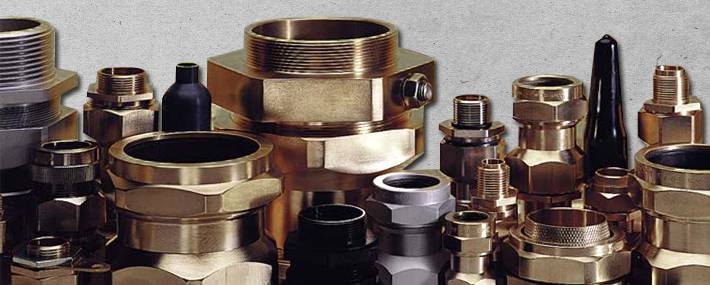There are a number of factors that need to be considered when choosing the correct type of cable glands for industrial applications.
Unnecessary problems, such as time wasted on site can be caused if the glands ordered are the incorrect size or type. These problems can be reduced by paying attention to the following considerations when specifying what glands are required.
Cable Gland Selection Guidelines
For all cables:
- Determine the type of cable being terminated
- Identify the construction, size and material properties of the cable used
For armoured cables:
- Check the material used for cable armouring (Aluminium Wire Armoured and Steel Wire Armoured etc) and specify the gland is manufactured from the correct material. i.e. brass, aluminium, nickel-plating
- Check the inside diameter of cable against the gland manufacturer specifications
- Check the outside diameter of the cable
- Identify the environment of gland installation and consider any corrosion protection requirements
- Check the ingress protection (IP) rating required by the equipment and application
- Consider if an entry thread seal is required for IP66 ratings and above
- Check whether other cable gland accessories are required (locknuts, earth tags etc)
- Check the gland meets necessary requirements if being installed within Hazardous Areas
- Identify the equipment entry thread and size and consider if any thread adaptors or converters are required
- Consider any unused cable entries and specify stopper plugs if needed
It is recommended that extra time for correct and proper cable gland selection be included within a purchasing schedule, in order to reduce the likelihood of inconvenience and time wasting at the critical point of installation.
ETS are happy to assist, at no cost, in carrying out gland selection and sizing in the event of a contractor having a cabling schedule. Please contact our Sales Team for more information about this service.
If you found this article helpful or interesting, please share it!














